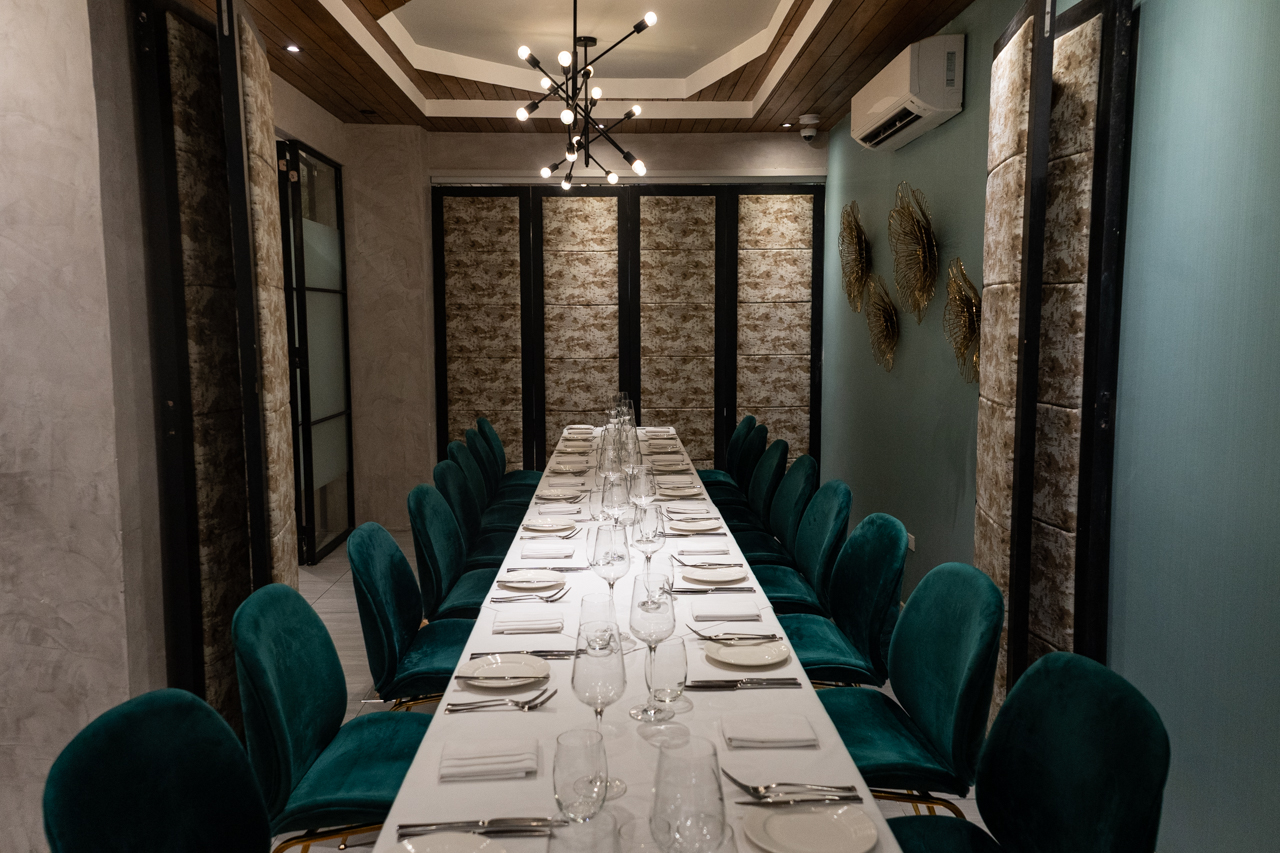“I thought we were going to feature my food, I didn’t know we were going to talk about me,” Markus Gfeller, chef and owner of Pinot says, laughing, during our visit to the newly opened restaurant. It’s in an almost hidden area of Bonifacio High Street, standing on the old grounds of where Cav, Gfeller’s previous fine dining establishment, used to be.
I am, admittedly, too young to know much about the radical and meteoric evolution of the Filipino dining scene. What I do know, though, is that part of it is credited towards Gfeller (Joy Rojas from Philippine Daily Inquirer dubs him a “1990s fine dining pioneer” in an article), and the multiple fine dining endeavors he’s put up over the years.

“The landscape has changed tremendously, especially in comparison to before,” Gfeller says. Part of this, he explains, is because ingredients have become far more easily available. “In the ’90s, there was only one lettuce: Baguio lettuce… fresh herbs were a rarity.” But the other part of the whole is the evolution of the Philippine clientele.
“[Back then], not a lot of people knew what a chef was. When I’d say I was a chef, people would say, ‘What, a kusinero?’”
Now, the Filipino diner is more savvy—maybe thanks to the rise of TV chefs who made the restaurant scene “look cool,” the growth of the middle class and democratization of fine dining, and the set up of schools devoted to the culinary arts, something that didn’t exist here before.
“I got myself involved in education,” says Gfeller. “I was part of the startup team of Enderun.”
Customer-driven fine dining
In some ways, Pinot is like a love letter to the new Filipino diner. Not so much fine dining as much as what he calls “modern European cuisine,” the restaurant is a more “no frills, casual, non-intimidating, fine dining approach”—where, Gfeller adds, wine lovers can pair their drinks with good food.
Compared to Cav, Pinot is smaller and more discreet (the former was twice the size) and approachable (the latter has no dress code). It’s only open in the evenings; hungry diners can instead go to Cafe Freddo, which is separated from Pinot by a curtain.
With its menu, one can clearly see how much the customer was kept in mind when crafting Pinot. There are three menus, one for each kind of customer: the tasting menu for the more adventurous ones (for P2,500, you can have have a full course meal replete with oysters and caviar); the prix fixe menu for those who “don’t really want to think about the food” (the price is set by number of courses, which means you can choose however many courses you’d like and which starter or main you’d like to go with it); and the grand pieces, which is “maybe for the lolos and lolas” and essentially big pieces of meat (a whole rack of lamb or US rib eye on the bone) that’s good for multiple people. It’s similar to the role that lechon takes at a fiesta table. The last one was a gamble, Gfeller admits.
Aside from that, Pinot has one other trick up its sleeve. Like many other restaurants, it offers a day for lobster specials (here, it’s on Wednesdays) but with a catch. “You can go to any other restaurant that serves lobster, they boil it,” he says. “[If you order it here], you get it in three ways.” The meat from the claws are cooked into a salad, while a lobster bisque is made out of the shell. The body is then either grilled or baked. “Out of one lobster, you get three courses.”
In some ways, Pinot is like a love letter to the new Filipino diner. Not so much fine dining as much as what he calls “modern European cuisine,” the restaurant is a more “no frills, casual, non-intimidating, fine dining approach.”
As we were leaving the restaurant, I noticed a large influx of people starting to come in. Seeing this, I asked what time Pinot, as a dinner operation, closes its doors for the day. Officially, I was told, it’s open until 11 p.m. However, it often stays open much longer than that—families and friends reuniting for the first time in years, for example, can stay drinking until the wee hours of the morning. “We’re open until our last customers leave.”
This exemplifies Pinot’s approach to fine dining, one that knows and appreciates customers and the intimately human experiences involved in the act of eating out. Other restaurants would do well to take note, especially as it comes from someone who helped carved the culinary scene into what it is today.